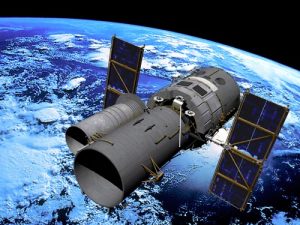In the late twentieth century, mankind made quantum leaps in its knowledge of the universe. Progress is underway to map the entire universe—with new insights into the vast unknown.
In 1986, a significant leap in the science of astronomy and astrophysics occurred, introducing a new frontier: Positions of galaxy clusters were represented on a computer model. Although dozens of surveys had already been conducted to chart the distribution of galaxies in particular segments of the universe, none attempted to cover so broad an expanse.
It was only a short century ago when Edwin Hubble demonstrated the extent of our expanding universe. In 1929, he was able to prove that galaxies were moving away from us and that their relative speed increased in proportion to their distance. Hubble’s findings fully agreed with Albert Einstein’s theory of relativity that took into account the vast space separating the galaxies.
One must consider how far we’ve come since then. Made in the 1980s, the first three-dimensional visualization of the near universe was chosen from the northern sky. This survey covered a spectrum of over 500 million light years, and while that sounds vast, Smithsonian astronomer Dr. Margaret Geller, explained how that particular panorama would be like trying to visualize the structure of continents and oceans by examining a map the size of Rhode Island.
In 2015 Researchers at the University of Hawaii at Manoa, led by Dr. Brent Tully, discovered a new technique that maps the universe by redrawing boundaries. They have redrawn the cosmic map of our corner of the universe, using new tools to define which galaxies interact with our own. The so-called supercluster of galaxies that contains the Milky Way has been named “Laniakea,” which means “immense heaven” in Hawaiian.
In 2016, the largest-ever 3D map of distant galaxies has been constructed with measurements made by the Baryon Oscillation Spectroscopic Survey (BOSS) program of the Sloan Digital Sky Survey-III, headquartered at Lawrence Berkeley National Lab. The Spectroscope was invented by Joseph von Fraunhofer, a German optician, in 1814. The device used a lens to focus incoming light and a device consisting of a number of narrow, parallel slits knows as a diffraction grating.
In astronomy, a spectroscope may be used in conjunction with a telescope. In relationship to a project as large as mapping our universe, ensuring that the lens on your equipment is of the highest quality, is where Universe Kogaku comes in. We work in-house with every aspect of your particular specifications, from design through manufacturing to deliver unparalleled quality.
BOSS measures the expansion rate of the universe by determining the size of the baryonic acoustic oscillations (BAO) in the 3D distribution of galaxies. The original BAO size is determined by pressure waves that traveled through the young universe up to when it was only 400,000 years old, at which point they became frozen in the matter distribution of the universe. The end result is that galaxies have a slight preference to be separated by a characteristic distance that astronomers call the acoustic scale.
“Measuring the acoustic scale across cosmic history gives a direct ruler with which to measure the universe’s expansion rate. With BOSS, we have traced the BAO’s subtle imprint on the distribution of galaxies spanning a range of time from 2 to 7 billion years ago,” said Ariel Sanchez of the Max-Planck Institute of Extraterrestrial Physics.
“We have spent five years collecting measurements of 1.2 million galaxies over one quarter of the sky to map out the structure of the universe over a volume of 650 cubic billion light years,” says Jeremy Tinker of New York University, one of hundreds of scientists and astronomers who worked on the project.
Clearly, to get a map of our entire universe will be a continuing, ever-evolving project. At Universe Kogaku, we design and manufacture optical lenses for Spectroscope Imaging systems, security, high tech and electronic applications. We stock 1000’s of standard lens assemblies and can custom design a solution for scanners, CCTV, CCD/CMOS, medical imaging, surveillance systems, machine vision and night vision systems.